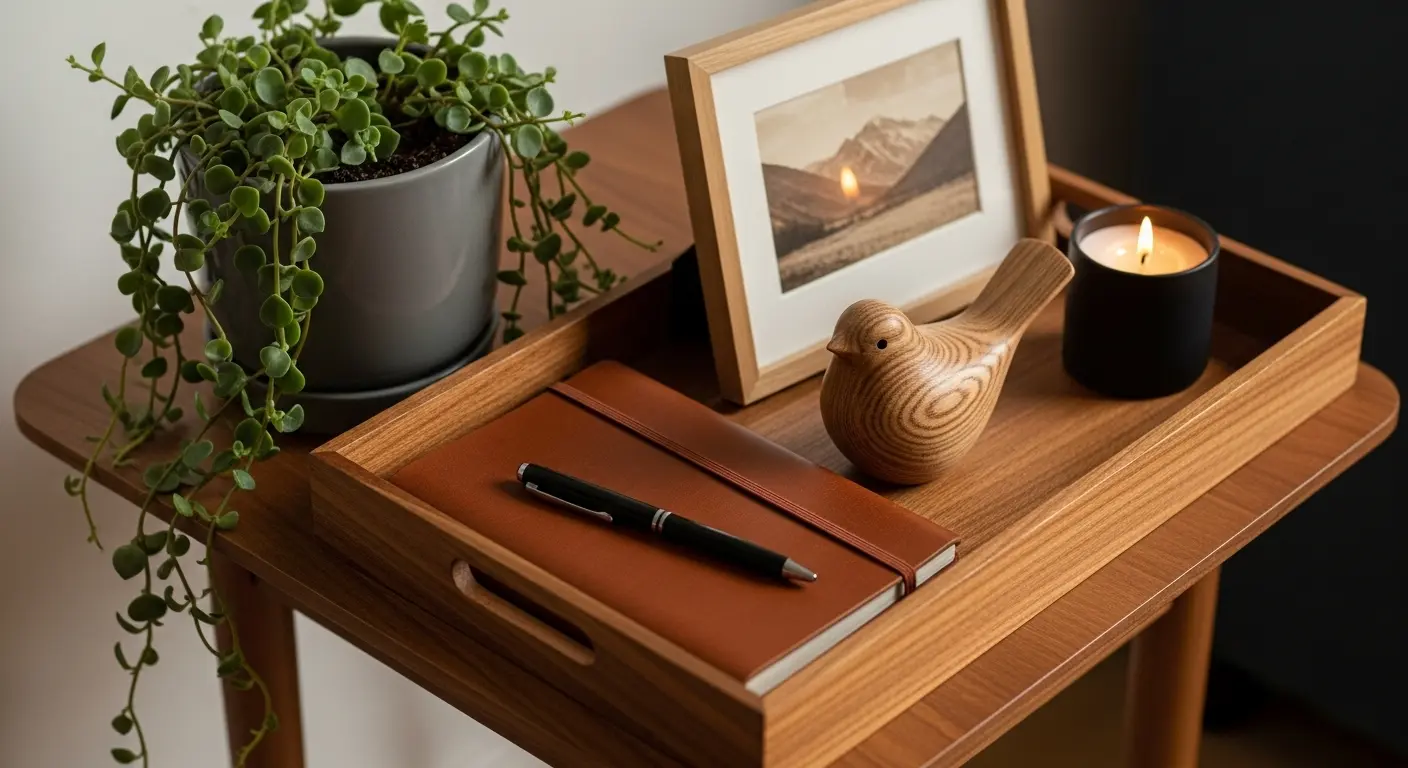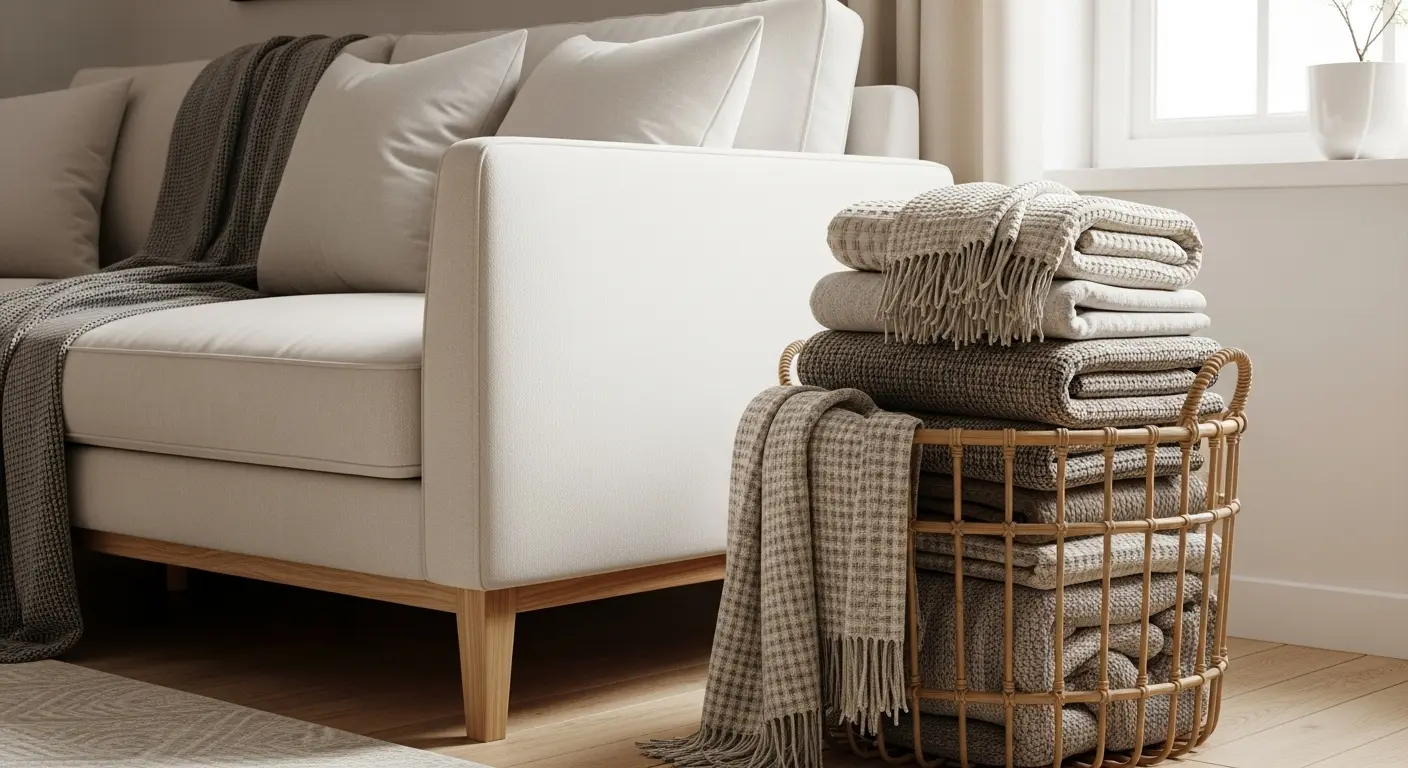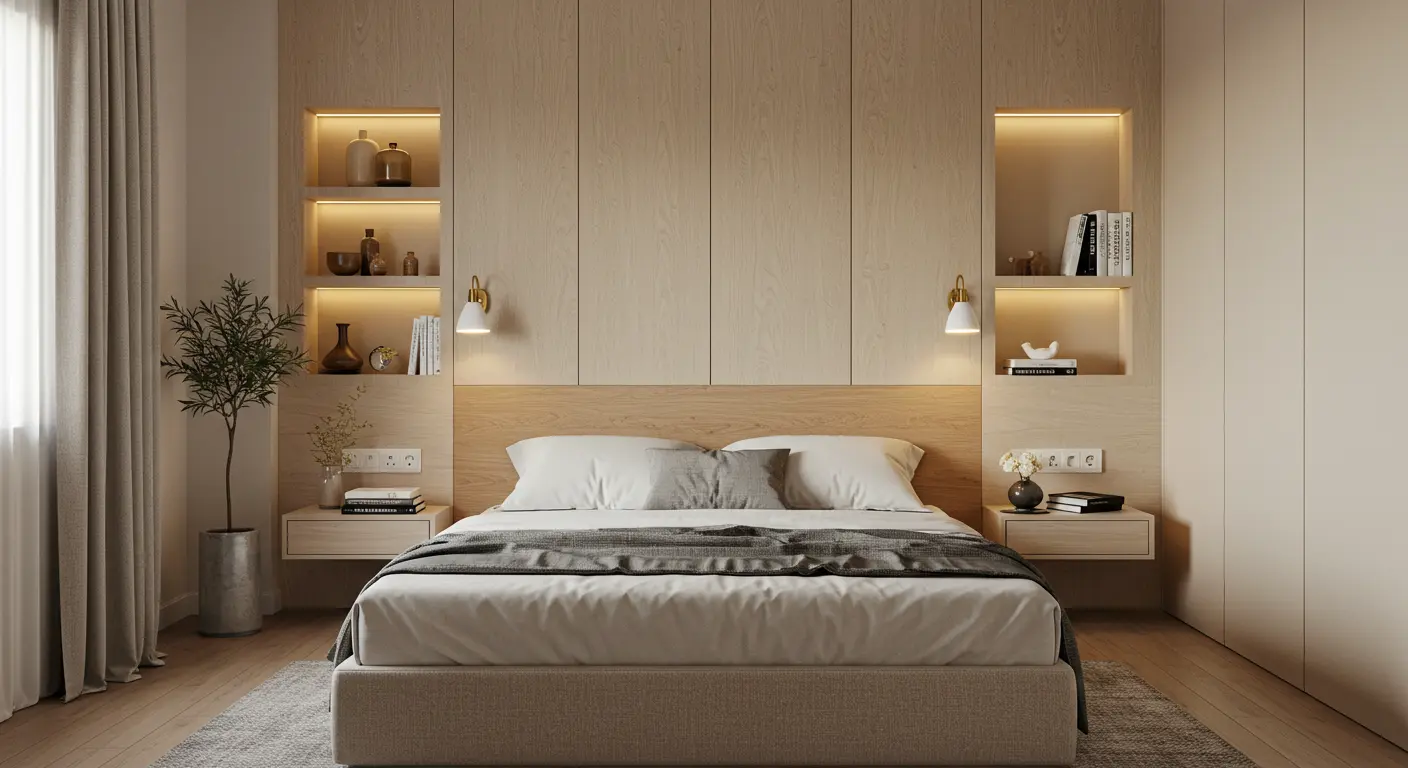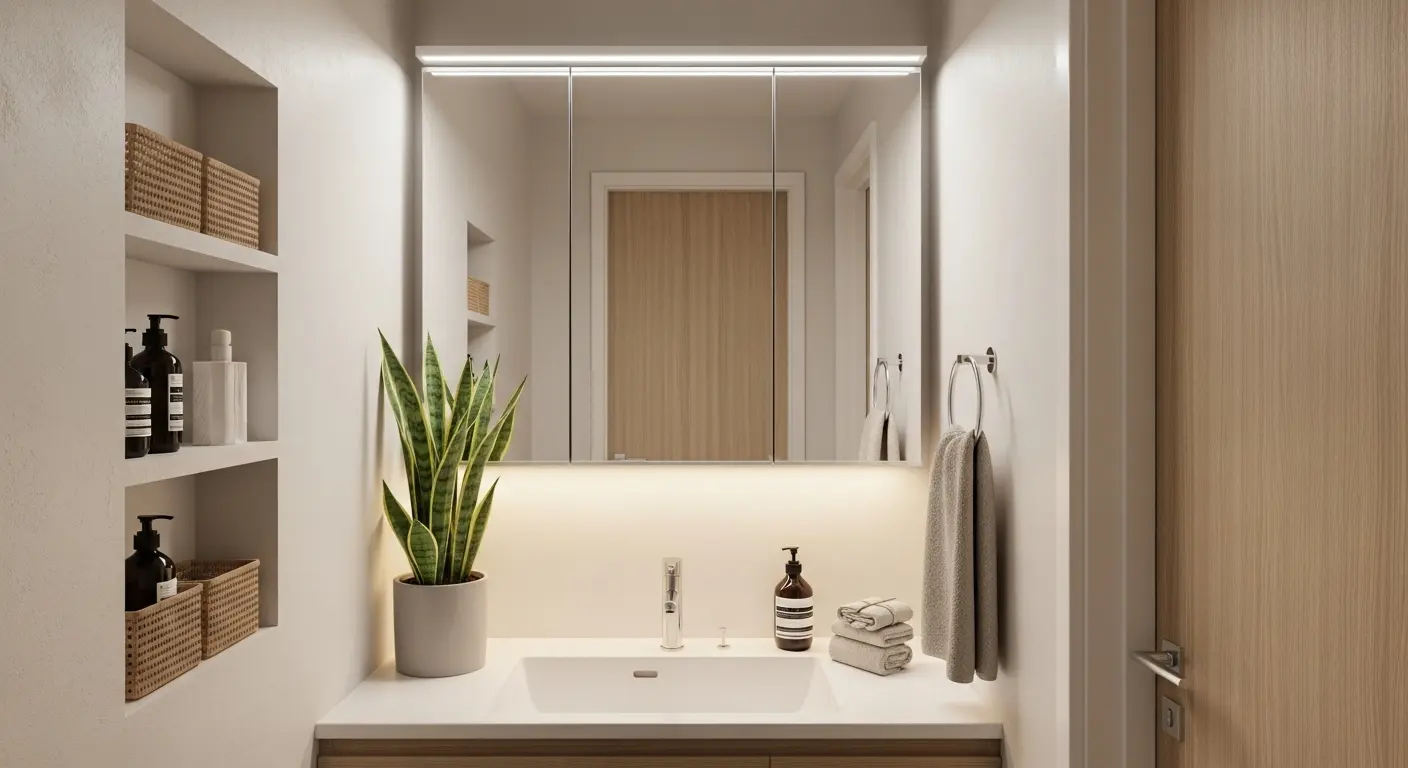
In small spaces, every detail matters — and an excess of decorative objects can create visual clutter, occupy precious space, and make daily organization difficult. The solution? Embrace functional decor: an approach that combines beauty and utility, creating lighter, more organized, and welcoming spaces.
In this article, you will discover how to choose decorative objects that also have a function, with practical ideas, room-by-room inspirations, and tips you can apply right now to transform your home with more intention and purpose.
Why Functional Decor Is Ideal for Small Spaces
Impact of Visual Clutter in Compact Spaces
In reduced spaces, less truly is more. When there are too many disconnected decorative elements — small scattered pictures, excessive trinkets, too many cushions, or furniture that occupies space without serving a purpose — the environment becomes visually cluttered, which can cause discomfort, a sense of mess, and even hinder the circulation of people and the flow of the space.
Visual accumulation makes it difficult to highlight what truly matters and often creates the impression of a space smaller than it actually is. Therefore, functional decor emerges as an aesthetic and strategic solution: it prioritizes the essential and values visual harmony and daily practicality.
The Importance of Multifunctionality in Aesthetics
Multifunctionality is one of the pillars of minimalist interior design — especially when we talk about compact environments. A single object can, and should, fulfill multiple functions: a bench can serve as a footrest, an extra seat, or a side table; a bookshelf can be a room divider and storage space at the same time.
Furthermore, objects with a clear function tend to have a more intentional, clean, and integrated design, which contributes to a more cohesive and elegant aesthetic. This approach does not sacrifice style: on the contrary, it elevates the environment, making it lighter, smarter, and visually pleasing.
How to Decorate with Intention and Purpose
The main difference between common decor and functional decor lies in intentionality. Instead of choosing an object just because you find it beautiful, the ideal is to ask: “Does this item truly contribute to the space? Does it have a clear function or reinforce a relevant aesthetic purpose for the environment?”
Decorating with purpose means valuing every choice. It means replacing an excess of generic items with fewer objects, but with more meaning. It means creating compositions that facilitate the use of space and also convey your personality. And, most importantly, it means freeing yourself from the idea that ‘more’ is synonymous with better.
How to Evaluate the Space Before Decorating
Understanding the Layout and Circulation Flows
Before choosing any decorative object, it is essential to observe the space as a whole: where are the light sources, how do people circulate, which areas are most used, and which are underutilized.
This mapping helps define strategic points to insert functional elements, such as a storage bench near the door or open shelves on empty walls. In small environments, fluidity matters as much as aesthetics — and a poorly positioned object can compromise all circulation.
The rule here is simple: if an item hinders the use of space, it needs to be repositioned, replaced, or eliminated.
What to Avoid: Pieces That Only Occupy Space
You know that sideboard that only accumulates random objects? Or that huge vase that doesn’t quite fit between the sofa and the wall? These are classic examples of pieces that occupy more than they contribute.
Avoid purely aesthetic objects that have no clear function in the environment. They tend to become visual or physical obstacles — especially in small apartments or studio flats, where every inch should be valued.
Practical tip: if you need to “make it work” for an object to fit in the room, it probably isn’t the best choice for the space.
How to Identify Areas with Decorative and Functional Potential
Instead of overloading walls and surfaces, look carefully at the underutilized spaces in your home: corners, hallways, areas above furniture, and side walls.
These locations can be transformed with functional objects that also decorate, such as:
- Built-in niches in narrow walls
- Decorative hooks at the entrance (which organize bags, keys, and coats)
- Baskets or decorative boxes under furniture
- Mirrors strategically placed to amplify natural light
Looking with intentionality reveals opportunities where before there was only “empty space.”
Decorative Objects That Also Have a Function
Not every beautiful object needs to be purely aesthetic. On the contrary — the best items for small spaces are those that decorate and serve. Below, you will learn about some of the smartest pieces to combine charm and functionality in any room.
Mirrors: Expand and Decorate
Mirrors are true wildcards in functional decor. In addition to expanding the sense of space and reflecting natural light, they help compose the environment with lightness and sophistication.
Models with light wood or black metal frames combine with styles such as Scandinavian, Japandi, and industrial minimalist. You can use them in:
- Entrance hall (with hooks below)
- Living room (above sideboards)
- Small bedrooms (on the closet door or side wall)
And the best part: they are easy to install and can completely transform the perception of space.
Baskets and Trays: Organization with Style
Baskets and trays are classic examples of useful decor. They keep the environment organized without compromising the visual appeal and also help create harmonious compositions.
- Baskets made of straw, crochet, or wire can store blankets, magazines, toys, or bathroom items with great charm.
- Organizing trays serve as a base for perfumes, kitchen utensils, keys, remote controls, or even small plants.
In addition to functionality, these pieces help to define and group objects, creating visual order and coziness. If combined with the right materials, such as natural wood, iron, or ceramic, they further enhance the visual comfort of the environment.
👉 Read also: Textures and Materials in Minimalist Design That Bring Visual Comfort

Clocks, Lamps, and Supports: Function and Charm
Some classic everyday objects are also great allies of functional decor:
- Well-chosen wall clocks become focal points and help with routine without occupying useful space.
- Wall lamps or pendants save surface space and add personality to the environment.
- Wall mounts (for bicycles, kitchen utensils, books, or plants) transform the vertical use of space with practicality and originality.
These items function as “dual-purpose”: they are useful in daily life and also help reinforce the decor style.
Smart Choices by Room
Each room in the house presents different challenges when space is limited. The good news is that functional decor offers creative solutions for all of them. Below, see how to make smart and useful choices in each room, without sacrificing style.
Living Room: Open Shelves and Coffee Table with Compartment
The living room is usually the social space and also where the accumulation of objects can be most noticeable. Here, open shelves are great allies: they organize books, decorate with plants, house sentimental objects — all without visually weighing down the environment.
A coffee table with an internal compartment is another functional example: in addition to supporting trays and light decorations, it can store remotes, magazines, games, or blankets.
Tip: choose furniture with straight lines, light finishes, and, if possible, with integrated functions, such as hidden niches or casters to facilitate movement.
Bedroom: Headboards with Niches, Storage Benches, and Wall Lamps
In the bedroom, the balance between coziness and functionality is essential. Invest in headboards with built-in niches or integrated shelves to accommodate books, small objects, or plants.
Storage benches at the foot of the bed are perfect for storing bedding, duvets, and even shoes, keeping everything tidy without compromising circulation. And to free up space on nightstands, opt for articulated wall lamps, which are not only practical but also make the look lighter and more modern.
These functional choices allow the bedroom to remain a sanctuary — without excess and without clutter.

Kitchen: Glass Jars, Iron Shelves, and Hooks
In the kitchen, organization is synonymous with functionality. Objects like transparent glass jars help to visualize and store food practically and also provide a clean and modern aesthetic.
Iron or light wood shelves utilize vertical spaces and accommodate plates, cups, or utensils with charm and accessibility. And hooks on metallic rails, installed near the countertop, are ideal for hanging cutlery, cloths, or even aromatic herb pots.
Each item can compose the decor while fulfilling a clear function — ideal for compact and well-utilized kitchens.
Bathroom: Mirror Cabinets, Baskets, and Trays
Small bathrooms greatly benefit from functional decor. Mirror cabinets, for example, combine two essential functions: they visually expand the environment and discreetly hide personal hygiene products.
Organizing baskets can be placed under the sink or inside niches to store towels and toilet paper with style. Meanwhile, decorative trays on the countertop organize soaps, perfumes, or diffusers with elegance.
Small details like these transform a utilitarian space into a pleasant, light, and inviting environment.

👉 And if you’re looking for even more solutions to intelligently utilize every inch of your home, it’s worth checking out these 10 minimalist interior design tips to maximize small spaces — practical and functional ideas to apply in every room.
How to Balance Aesthetics and Function Without Overdoing It
Maintaining the balance between beautiful visuals and practical utility is one of the biggest challenges — and also one of the greatest differentiators — of functional decor. This is where minimalism stands out as a lifestyle and an aesthetic strategy: it invites us to reflect on the purpose of each object and to keep only the essential.
Define a Visual Palette for Objects
Even if every item in the environment is functional, it’s important that they all visually converse with each other. A cohesive palette — with neutral tones, earthy colors, or variations of natural wood, for example — creates a sense of harmony that helps convey calm, lightness, and organization.
Useful objects, such as boxes, jars, or lamps, also need to respect the visual style of the environment. This prevents the decor from looking “broken” or improvised.
Practical tip: choose 2 to 3 predominant materials (such as light wood, matte metal, or ceramic) and repeat them in different objects throughout the space.
Avoid Accumulation: Less Is More, Even in Decor
Functionality is no excuse for excess. Having too many useful objects in the same environment can be as detrimental as having purely decorative items. Remember: the goal is to create breathable, fluid, and visually light environments.
Constantly evaluate: do you really use all the visible objects? Do they all fulfill a real and current function? If not, it’s worth reallocating, storing, or letting go.
This curation exercise is essential for the space to remain functional without becoming visually overloaded.
Swap Seasonal Items or Those That Lose Their Purpose
Another secret to maintaining balance is allowing the environment to refresh itself from time to time — without accumulating. An effective way to do this is to adopt the rotation of functional objects according to the seasons or current needs.
In summer, for example, blankets and heaters can be stored, while trays for flavored water and indoor plants take center stage. In winter, the process reverses.
This practice keeps the home alive, updated, and consistent with its real use, without sacrificing style.
Materials and Styles That Favor Functionality
Choosing the right materials is as important as choosing the right objects. In small spaces, durability, ease of cleaning, and visual lightness are fundamental characteristics to maintain functionality without compromising aesthetics. Here, less is more — but with intention and quality.
Light Wood, Iron, Glass, and Ceramic
Some materials stand out for their versatility and timeless aesthetic:
- Light wood: brings warmth and combines with practically all minimalist styles. Furthermore, it reflects more light and visually expands the environment.
- Iron: resistant, functional, and discreet. Ideal for shelves, hooks, supports, and furniture bases with a thin profile.
- Glass: light, translucent, and elegant. Works well in tables, shelves, and organizing jars, keeping the environment airy.
- Ceramic: perfect for trays, vases, and small decorative objects with an artisanal touch and sophisticated look.
These materials are easy to clean, durable, and do not visually weigh down the space, making them ideal for those seeking a beautiful, practical, and soulful home.
Scandinavian, Japandi, and Industrial Minimalist Styles
Three styles stand out when it comes to functional decor with a clean aesthetic:
- Scandinavian: values natural light, light tones, and natural materials. Functionality and well-being are priorities.
- Japandi: a fusion between Japanese minimalism and Nordic simplicity. Prioritizes the essential, focusing on balance and beautiful imperfection.
- Industrial minimalist: combines rustic and urban elements (such as iron, burnt cement, and raw wood) with clean lines and well-organized environments.
Incorporating elements from these styles helps create a home that not only looks functional — it truly is. Everything has a reason to be there.
Final Tip: Choose Easy-to-Maintain Pieces
There’s no point in having a beautiful piece if it accumulates dust, stains easily, or requires constant maintenance. In small spaces, every object should facilitate daily life, not complicate it.
Opt for washable surfaces, waterproof fabrics, simple-to-assemble and disassemble structures. The more practical the maintenance, the more you will be able to maintain the harmony and purpose of functional decor over time.
6. Comparative Table: Aesthetic vs. Functional
| Type of Object | Aesthetic, but without function | Functional Decor |
|---|---|---|
| Large decorative vase | Occupies space, no practical utility | Vase with air-purifying plant |
| Small isolated picture | Does not visually fill the environment | Organized gallery with personal theme |
| Common organizing box | Hidden in the closet, no aesthetic value | Decorative box on shelf or display |
| Traditional side table | Only support, occupies useful area | Side table with internal compartment |
| Shelf full of objects | Visually heavy and disorganized | Shelf with books, plants, and useful objects |
🪄 This table helps the reader reflect: what is occupying space in your home — and what is truly adding value to the environment?
Conclusion
Functional decor is not just a trend — it’s a conscious and strategic choice for those living in small spaces who wish to combine practicality, style, and well-being. By transforming common objects into allies of organization and comfort, you create environments that truly work for your daily life.
More than following aesthetic rules, the secret lies in decorating with intention: understanding your needs, valuing every inch, and surrounding yourself only with what truly matters. This shift in perspective makes the home a reflection of your lifestyle — light, practical, and full of personality.
✨ How about starting today? Choose a room in your home, analyze the decorative objects there, and see which ones can be replaced by more useful and functional versions. You’ll be surprised by the impact of this simple change.
